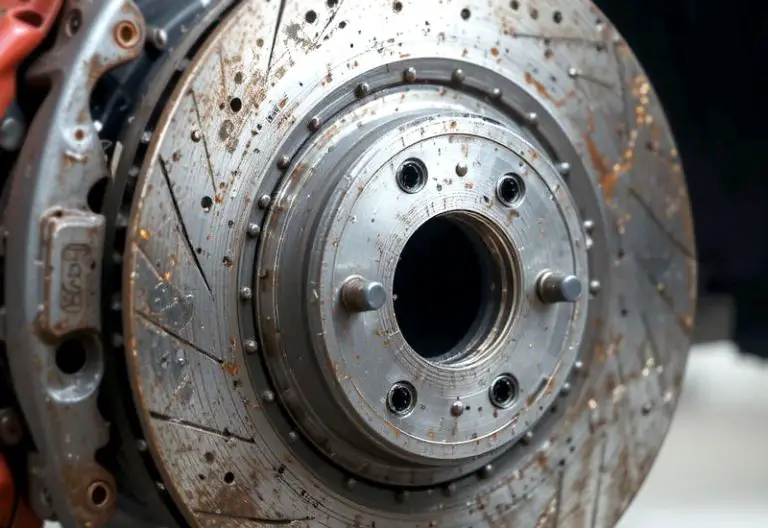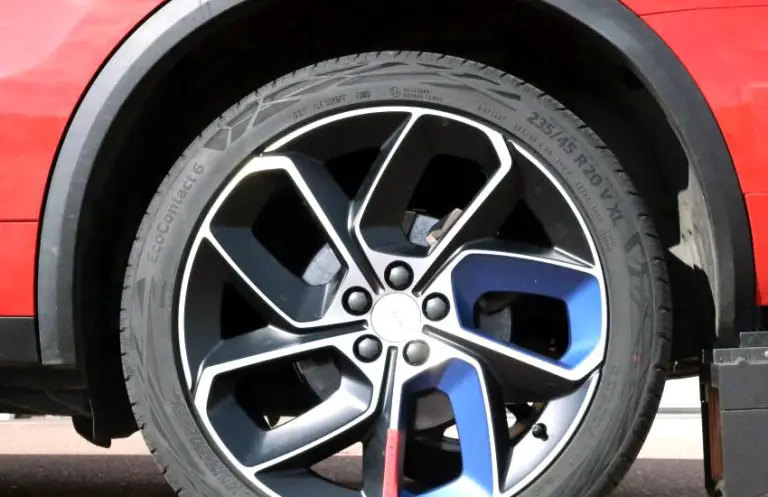When braking on a motorcycle, you need to shift down to match the lower speed. Shifting down allows the engine to slow down the bike and prevents stalling.
It’s a crucial part of the braking process on a motorcycle, ensuring that the engine is in the correct gear for the speed. Proper downshifting can also help maintain stability and control during braking, especially when approaching a stop or navigating through curves.
Motorcycle riders should practice downshifting as part of their braking technique to ensure safe and effective riding. Understanding when to shift down and how to do it smoothly is essential for motorcycle safety and performance.

Credit: www.jbsa.mil
The Importance Of Downshifting While Braking On A Motorcycle
When braking on a motorcycle, downshifting is important to maintain control and prevent engine damage. Downshifting helps in matching the appropriate gear to the bike’s speed, ensuring smooth deceleration and a safe, controlled stop.
Why Downshifting Is Crucial For Motorcycle Braking
Downshifting on a motorcycle aids in slowing down smoothly and maintaining control.
The Role Of Downshifting In Maintaining Control
Downshifting helps in keeping the motorcycle stable while braking.
How Downshifting Can Improve Braking Efficiency
Downshifting enhances braking efficiency, ensuring quicker response and control.
Proper Technique For Downshifting While Braking
When braking on a motorcycle, downshifting is essential for maintaining control and keeping the engine within its optimal operating range. The proper technique for downshifting while braking involves a combination of clutch and throttle control, as well as following the correct sequence to ensure a smooth transition.
Understanding The Clutch And Throttle Control
Properly understanding how to use the clutch and throttle is crucial when downshifting while braking on a motorcycle. The clutch disengages the engine from the rear wheel, allowing for smooth gear changes, while the throttle controls the engine speed. Balancing these two controls is key to executing smooth downshifts.
The Correct Sequence Of Downshifting And Braking
When approaching a stop or slowing down on a motorcycle, the correct sequence of downshifting and braking is to first apply the brakes to decelerate, then squeeze the clutch lever to disengage the engine, select the appropriate lower gear using the gear lever, and finally release the clutch gradually while blipping the throttle to match engine speed.
Tips For Smooth Downshifting While Braking
- Anticipate your downshifts while approaching a stop to avoid abrupt gear changes.
- Practice matching engine speed with gear changes for seamless downshifts.
- Apply consistent pressure on the brake lever while downshifting to maintain control.
- Engage in regular practice sessions to improve your downshifting technique.
Common Mistakes To Avoid When Downshifting While Braking
Common Mistakes to Avoid When Downshifting While Braking
When it comes to riding a motorcycle, effective braking techniques are crucial for your safety on the road. One important aspect of braking on a motorcycle is downshifting properly to match your speed and gear selection. However, many riders make common mistakes that can lead to accidents or damage to the bike. To help you become a safer and more skilled rider, let’s take a closer look at some of these mistakes and how to avoid them.
Over-revving The Engine During Downshifting
One of the most common mistakes riders make when downshifting while braking is over-revving the engine. This happens when you downshift too aggressively, causing the engine to rev higher than necessary. Over-revving can put unnecessary stress on the engine components, potentially leading to mechanical issues over time.
How to avoid over-revving:
- Before downshifting, make sure to assess your current speed and apply the brakes accordingly.
- Gradually downshift one gear at a time, matching the engine speed with the gear selection.
- For smoother downshifting, try blipping the throttle gently while pulling the clutch lever in.
Not Matching The Engine Speed With The Gear Selection
Another mistake that riders often make is not matching the engine speed with the gear selection. When downshifting, each gear change should be accompanied by an appropriate adjustment in engine speed. Failing to do so can result in a sudden jolt, unsettling the bike’s balance and potentially causing a loss of control.
How to match the engine speed with the gear selection:
- When initiating the downshift, pull in the clutch lever and gradually roll off the throttle.
- As you downshift, ensure that the engine speed matches the appropriate gear. Listen to the sound of the engine and feel the smoothness of the gear engagement.
- Practice downshifting in a controlled environment to develop a better sense of matching the engine speed with each gear change.
Premature Downshifting Or Shifting Too Late
Premature downshifting or shifting too late can also cause problems when braking on a motorcycle. Premature downshifting means shifting into a lower gear too soon, without properly slowing down. On the other hand, shifting too late can result in the bike losing sufficient engine braking power, making it harder to control the speed.
How to avoid premature downshifting or shifting too late:
- Anticipate the need for downshifting by observing the traffic conditions and road ahead.
- Timing is key – aim to downshift when your speed is within a suitable range for the gear you’re shifting into.
- Practice progressive braking, gradually reducing your speed before executing downshifts.
Neglecting To Use The Clutch Properly
Lastly, neglecting to use the clutch properly can lead to jerky gear changes and a lack of control during downshifting while braking. Not properly engaging or disengaging the clutch can make the gears grind or lurch, causing unnecessary strain on the transmission.
How to use the clutch properly:
- Pull in the clutch lever smoothly and completely to disengage the engine from the transmission.
- Shift gears while the clutch is fully pulled in, making sure to release it smoothly and gradually as you engage each gear.
- Avoid holding the clutch lever partially pressed, as it can lead to clutch slippage and reduced control.
By avoiding these common mistakes and practicing proper downshifting techniques, you’ll not only improve your braking skills but also enhance your overall motorcycle riding experience. Remember, safe riding starts with mastering the fundamentals!
Benefits Of Downshifting While Braking
When braking on a motorcycle, the technique of downshifting plays a crucial role in ensuring safety and control. The benefits of downshifting while braking are numerous and can significantly enhance the rider’s experience on the road.
Increased Stability And Control
Downshifting while braking helps to maintain stability and control of the motorcycle. By smoothly shifting down through the gears, the engine braking effect is utilized, providing a more gradual reduction in speed and preventing sudden jolts or jerks.
Better Traction And Grip On The Road
When downshifting during braking, the motorcycle’s engine braking effect helps to improve traction and grip on the road surface. This enhances the rider’s ability to maneuver and respond to changing road conditions more effectively.
Quicker Response Time For Emergencies
By downshifting while braking, riders can achieve a quicker response time in emergency situations. The ability to seamlessly downshift allows for immediate acceleration if needed, helping to avoid potential hazards or obstacles on the road.
Reduced Wear And Tear On The Brakes
Downshifting while braking also contributes to reduced wear and tear on the motorcycle’s braking system. By utilizing engine braking, the load on the brake pads and rotors is lessened, extending their lifespan and ensuring optimal performance.
Expert Tips For Downshifting While Braking Safely
When braking on a motorcycle, downshifting is crucial for maintaining control and ensuring a smooth deceleration. Expert tips for downshifting while braking safely can significantly improve your riding experience and safety. Let’s delve into these essential tips for mastering this critical skill.
Maintain A Proper Riding Position
When downshifting while braking, it’s essential to maintain a proper riding position to ensure stability and control. Keep your body upright and maintain a firm grip on the handlebars. Position your feet on the footpegs to enable easy and precise downshifting, enhancing your overall control of the motorcycle.
Practice And Familiarize Yourself With The Gear Ratios
To downshift effectively while braking, it’s crucial to be familiar with your motorcycle’s gear ratios. Spend time practicing shifting in various conditions to understand how your bike responds to different gears. This familiarity will enable you to downshift smoothly and efficiently while braking without disrupting the balance of the motorcycle.
Anticipate And Plan Your Downshifts In Advance
Anticipating your downshifts in advance is essential for safe and seamless braking. Analyze the road ahead to anticipate when you need to slow down and downshift accordingly. By planning your downshifts in advance, you can ensure a smooth transition between gears while maintaining control during braking.
Gradually Apply Brake Pressure While Downshifting
When downshifting while braking, it’s crucial to gradually apply brake pressure. This gradual approach ensures that each downshift is seamlessly integrated with the braking process, preventing any sudden disruptions to the motorcycle’s stability. Coordination between braking and downshifting is key to a safe and controlled deceleration.
Understanding The Limits Of Downshifting While Braking
When it comes to riding a motorcycle, one of the essential skills every rider must have is the ability to effectively manage their speed. This involves not only the proper application of the brakes but also knowing when and how to downshift. Downshifting while braking can have a significant impact on the overall performance of your motorcycle, allowing for smoother transitions and better control on the road. However, it is important to understand the limits of downshifting and how various factors like road conditions, motorcycle weight and suspension, and the type of motorcycle can affect this technique.
The Impact Of Road Conditions On Downshifting
When it comes to downshifting while braking, road conditions play a crucial role in determining how effective this technique can be. Different surfaces can have varying levels of traction, and this can directly affect the stability and control of your motorcycle. For example:
| Road Condition | Impact on Downshifting |
|---|---|
| Dry and well-paved roads | Allows for smooth downshifting and better control. |
| Wet or slippery roads | Downshifting can result in a loss of traction and potential skidding. |
| Uneven or bumpy roads | Downshifting while braking can lead to instability due to reduced tire grip. |
Therefore, it is crucial to assess the road conditions before attempting to downshift while braking. Adjusting your technique based on the surface you are riding on can enhance your overall safety and control.
The Significance Of Motorcycle Weight And Suspension
Another vital factor to consider when downshifting while braking is your motorcycle’s weight and suspension system. These elements directly impact how your motorcycle responds to the downshifting process. Here are a few key points to remember:
- A heavier motorcycle may require more downshifting to slow down effectively.
- A lighter motorcycle may call for fewer downshifts, as the weight itself aids in deceleration.
- The suspension system plays a critical role in maintaining stability and control. It absorbs the impact of road irregularities and ensures smoother downshifting.
Understanding the weight and suspension characteristics of your motorcycle is essential for optimizing your downshifting technique while braking.
How Different Types Of Motorcycles May Require Different Downshifting Approaches
Lastly, it is crucial to acknowledge that different types of motorcycles may demand varying downshifting approaches. The design, engine capacity, and overall performance characteristics can influence the way downshifting affects your riding experience. Here are a few examples:
- Sport bikes, with their high-performance engines, often require precise downshifting to match their higher RPMs and gear ratios.
- Cruisers, known for their relaxed and low-RPM power delivery, may not need frequent downshifting due to their torque-rich engines.
- Off-road or dual-sport motorcycles may require downshifting to counteract the reduced engine braking experienced on dirt or loose surfaces.
Understanding the nuances of different motorcycle types can help you adapt your downshifting technique to ensure optimal control and performance.
Additional Considerations For Downshifting While Braking
When braking on a motorcycle, downshifting is crucial for smoother deceleration and to maintain control. Additional considerations include anticipating the required gear for the appropriate speed and engine braking to prevent skidding or losing traction.
Mastering Downshifting On Both Straight Roads And Corners
Adapting Downshifting Techniques For Different Riding Scenarios
The Influence Of Rider Experience And Skill Level
The Importance Of Regular Maintenance On The Motorcycle’s Transmission System
Additional considerations for downshifting while braking: Riders should master downshifting on various terrains like straight roads and corners. Adapting downshifting techniques based on riding scenarios is crucial. Rider experience and skill level greatly impact downshifting while braking. Regular maintenance ensures a healthy transmission system.
Credit: www.police1.com

Credit: damon.com
Conclusion
Shifting down when braking on a motorcycle is not a mandatory requirement but can be beneficial in certain situations. By downshifting, riders can maximize engine braking, maintain better control, and be prepared for quick acceleration if needed. However, it ultimately depends on the rider’s preference and the specific road conditions.
Stay safe and ride responsibly!


